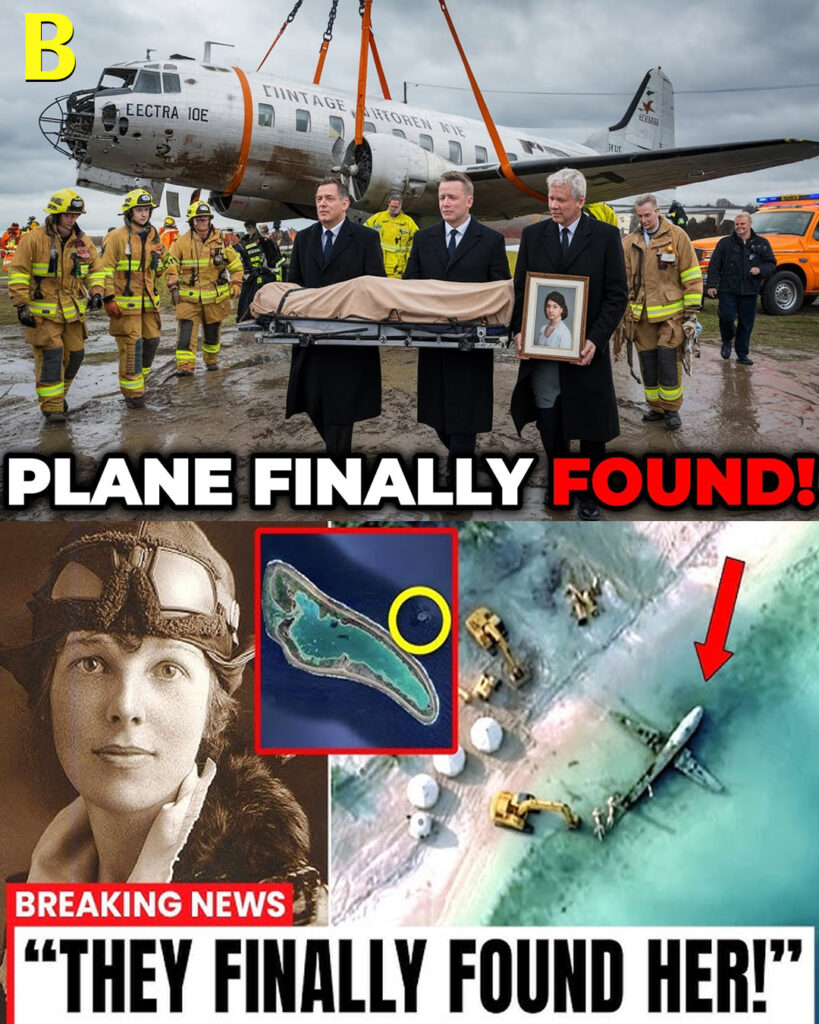
Here’s a 500-word article-style version of your headline story:
After 88 years of mystery and speculation, the world may finally have answers about one of aviation history’s greatest enigmas: the disappearance of Amelia Earhart. On July 2, 1937, Earhart, the pioneering aviator and first woman to fly solo across the Atlantic, vanished somewhere over the central Pacific Ocean during her attempt to circumnavigate the globe. Her disappearance sparked decades of search efforts, conspiracy theories, and endless fascination. For generations, her fate remained one of the 20th century’s most enduring mysteries.
Now, according to a team of international researchers and archaeologists, new evidence suggests that Earhart’s Lockheed Electra plane has finally been located. The discovery, made in a remote section of the Pacific, came after years of painstaking analysis of historical flight logs, satellite imagery, and oceanographic data. The team reportedly identified aircraft wreckage partially submerged on a coral atoll, perfectly matching the size, shape, and design of Earhart’s Electra.
The find could answer lingering questions about the final hours of Earhart’s journey. For decades, theories about her disappearance have ranged from crashing at sea to landing on a deserted island and surviving for some time before succumbing to the elements. Some speculated about espionage or secret landings, but none had been conclusively proven. Now, with physical evidence potentially pointing to the wreckage, researchers are closer than ever to understanding what happened that fateful day.
Historians are hailing the discovery as a monumental moment for aviation history. “This is the closest we’ve ever come to solving one of the greatest mysteries of the 20th century,” said Dr. Elaine Carter, a historian specializing in early aviation. “Amelia Earhart was a symbol of courage and determination. Finally uncovering her plane gives us a tangible connection to her legacy.”
The implications extend beyond historical curiosity. Recovery of the aircraft could provide insight into 1930s aviation technology, navigation methods, and the extreme challenges faced by early pilots. Investigators hope that forensic analysis of the wreckage will yield clues not only about the crash but also about Earhart’s last communications and movements, offering long-awaited closure to her family and admirers around the world.
Social media and news outlets erupted with excitement following the announcement. Enthusiasts flooded platforms with tributes, photos, and speculative reconstructions of the Electra’s final flight. Museums and aviation societies are already planning exhibits to showcase the discovery and honor Earhart’s pioneering spirit.
While the world celebrates this breakthrough, experts caution that official verification is still underway. Teams plan to conduct underwater dives, retrieve artifacts, and perform detailed forensic examinations to confirm the identity of the plane definitively. Yet, even preliminary findings have reignited hope that the 88-year-old mystery is finally nearing its conclusion.
Amelia Earhart’s legacy as a trailblazer, a fearless explorer, and a symbol of determination remains untarnished. Now, thanks to tireless research and modern technology, the story of her final flight may finally be told with clarity, offering humanity a chance to celebrate not only her achievements but also the triumph of perseverance in the pursuit of truth.


